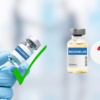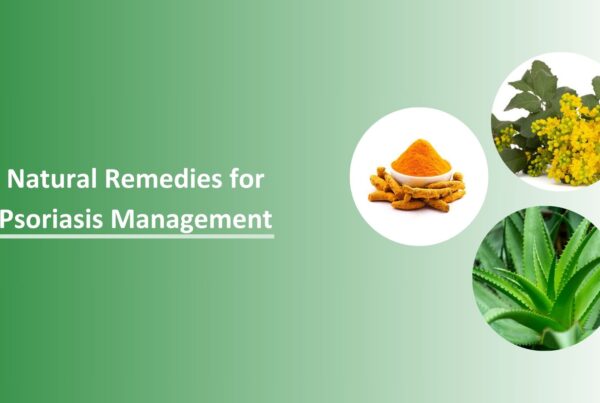Introduction
Tyrosinemia refers to a group of rare genetic disorders affecting the metabolism of the amino acid tyrosine. There are multiple types of tyrosinemia, each resulting from a deficiency of different enzymes involved in tyrosine catabolism. In this blog, we will explore the inheritance patterns, symptoms, diagnostic methods, and treatment approaches for tyrosinemia.
What is Tyrosinemia?
Tyrosinemia encompasses a group of genetic disorders characterized by the impaired metabolism of tyrosine, an essential amino acid. This condition arises from deficiencies in enzymes called fumarylacetoacetate hydrolase (FAH), which is crucial for tyrosine breakdown, resulting in the accumulation of toxic metabolites. As a rare genetic disorder, tyrosinemia disrupts the body’s ability to process tyrosine, leading to various health complications.
Tyrosine And Its Uses
Tyrosine, an amino acid derived from phenylalanine, holds significant importance in the body’s functions. It acts as a precursor for neurotransmitters like dopamine, norepinephrine, and epinephrine, vital for proper brain function. Additionally, tyrosine contributes to thyroxine production, a thyroid hormone, and melanin, the pigment responsible for skin, hair, and eye color.
Tyrosine supplements are utilized in treating phenylketonuria (PKU), a genetic disorder marked by high phenylalanine levels. While there’s mixed evidence, tyrosine supplementation is explored for enhancing alertness, focus, and mood regulation, as well as managing conditions like depression, anxiety, and insomnia.
Caution is advised, as excessive intake or prolonged use may pose risks, especially for those with certain medical conditions or taking specific medications. Consulting a healthcare professional before tyrosine supplement use is recommended, particularly for individuals with existing health issues.
Inheritance Pattern: World vs India
Tyrosinemia follows an autosomal recessive inheritance pattern, requiring individuals to inherit two copies of the affected gene, one from each parent, to develop the disorder. The prevalence of tyrosinemia varies globally, with higher rates observed in populations of Northern Europe and North America. Type I specifically poses a 25% risk with each pregnancy for both carrier parents to pass the defective gene to their child. While Types II and III lack clearly defined inheritance patterns, they are generally less common than Type I.
In India, the occurrence of tyrosinemia is comparatively lower, estimated at approximately 1 in 50,000 births. Tyrosinemia has an estimated prevalence of 1:1,00,000 in the world. The prevalence in India is not known, and perhaps goes undiagnosed.
India, with nearly 1.4 billion people, is recognized as having a significant proportion of the global burden of rare diseases. Approximately 72 to 96 million Indians are affected by rare diseases according to various estimates. Despite this considerable impact, India faces challenges in diagnosing and treating rare diseases due to limited epidemiological data, insufficient healthcare infrastructure, and resource constraints.
Role of Tyrosinemia
Tyrosinemia primarily involves the body’s inability to efficiently metabolize the amino acid tyrosine. This metabolic disorder stems from a deficiency in the fumarylacetoacetate hydrolase (FAH) enzyme, crucial for tyrosine metabolism.
Without treatment, tyrosine and its byproducts can build up in tissues and organs, resulting in severe medical issues like liver and kidney disease, as well as cognitive impairment. Deficiencies in these enzymes disrupt normal pathways, leading to accumulation of toxic metabolites.
Types Of Tyrosinemia
Tyrosinemia manifests in three distinct types, each categorized by specific symptoms and genetic origins:
- Tyrosinemia Type I: This severe variant affects approximately 1 in 100,000 individuals globally. Infants with this type often display failure to thrive, poor weight gain, and complications related to liver and kidney function.
- Tyrosinemia Type II: Less common, occurring in fewer than 1 in 250,000 individuals worldwide. It is characterized by symptoms such as eye pain, redness, sensitivity to light, palmoplantar keratoderma, and intellectual disability.
- Tyrosinemia Type III: Extremely rare, with only a handful of documented cases. Patients typically present with intellectual disabilities, seizures, and intermittent ataxia, but without significant liver involvement.
The severity and clinical manifestations of tyrosinemia vary across these types, underscoring the importance of early diagnosis and intervention for optimal management and outcomes.
Symptoms and Signs
The symptoms and signs of tyrosinemia vary depending on the type of tyrosinemia diagnosed. Here are the key symptoms associated with each type:
Tyrosinemia type I can vary greatly among individuals, with two main forms of presentation: acute and chronic.
- The acute form, typically occurring at birth (congenital) or in early infancy, is more severe. Infants may initially display failure to thrive, accompanied by fever, diarrhea, bloody stools (melena), and vomiting. Other signs include an enlarged liver (hepatomegaly), jaundice, lethargy, and irritability.
- As the condition progresses, infants may develop an enlarged spleen (splenomegaly), fluid accumulation (edema) in the abdomen (ascites), and, in severe cases, acute liver failure and blood clotting (coagulopathy)issues. Some infants may also have a distinct odor resembling cabbage.
- The chronic form, less common and less severe, presents gradually after six months of age. Symptoms may include failure to thrive, developmental delays, and liver cirrhosis leading to chronic liver failure.
- Kidney abnormalities like renal Fanconi syndrome can occur, causing bone weakening (rickets) and episodes of vomiting, dehydration, and weakness.
- About 40% of affected infants experience neurological (polyneuropathy) crises characterized by severe leg and abdominal pain, muscle stiffness (hypertonia), vomiting, intestinal obstruction (ileus), irregular heartbeat (tachycardia), and high blood pressure (hypertension).
- Hypertrophy of the heart’s ventricular septum and left ventricular wall may also occur, along with a heightened risk of liver cancer.
- Treatment typically involves nitisinone and a low-tyrosine diet, which have significantly improved survival rates and various health outcomes in affected children, including normal growth, improved liver function, prevention of cirrhosis, correction of kidney disease, and improvement in bone health. Early diagnosis and intervention are crucial for managing tyrosinemia effectively and preventing complications.
Tyrosinemia Type 2:
- Skin lesions causing pain
- Eye inflammation and sensitivity to light
- Cloudiness in the cornea
- Cognitive impairment
- Behavioral issues
- Seizures
Tyrosinemia Type 3:
- Intellectual disability
- Seizures
- Intermittent ataxia
It’s important to note that these symptoms can have a significant impact on an individual’s health and development. Early diagnosis and appropriate management are crucial in addressing the symptoms and improving the quality of life for individuals with tyrosinemia.
Diagnosis
Tyrosinemia diagnosis relies on blood and urine tests. Liver function tests typically show abnormalities in both acute and chronic cases, often revealing low serum albumin and clotting factors.
Confirmation of the diagnosis involves measuring the abnormal product Succinylacetone in urine. Additionally, prenatal testing for tyrosinemia is feasible, enabling the detection of mutations or Succinylacetone levels in amniotic fluid.
- Type I tyrosinemia diagnosis involves blood tests to detect the presence of succinylacetone, a metabolite of fumarylacetoacetate, which is considered a definitive marker for the disease. Tandem mass spectrometry can measure succinylacetone levels in newborn blood spots.
- Type II tyrosinemia is identified by significantly elevated plasma tyrosine levels, with confirmation typically through the detection of mutations in the TAT gene in cultured fibroblasts, although a citation is needed for this.
- Type III tyrosinemia diagnosis relies on detecting mutations in the HPD gene in cultured fibroblasts.
Newborn screening programs rely on appropriate diagnostic markers to detect metabolic disorders early. Many programs worldwide use tyrosine levels as a marker for identifying tyrosinemia type I.
The index case test is pivotal for identifying the first instance of a genetic disorder within a family, particularly in cases of Tyrosinemia Type I linked to mutations in the FAH gene. Conducted using a blood sample, this diagnostic procedure aims to detect mutations in the FAH gene, typically ordered when Tyrosinemia is suspected based on clinical symptoms or family history. In Hyderabad, the screening cost for this test is ₹27,720.
Treatment
Management of tyrosinemia depends largely on the specific type and severity of the disorder. Access to a skilled nutritionist familiar with managing low-protein diets for children with metabolic disorders is crucial for therapy. Regular blood tests are necessary to maintain the correct dose.
Restricting the consumption of tyrosine-rich food items, such as animal proteins, and supplementing with essential amino acids. Utilizing pharmacological agents like nitisinone (NTBC) to block the production of toxic metabolites.
Nitisinone, also called NTBC, works by blocking the enzyme 4-hydroxyphenylpyruvate dioxygenase (HPPD), which is crucial in tyrosine breakdown. This inhibition prevents the formation of harmful byproducts like succinylacetone, which causes liver and kidney damage in HT-1 patients. By reducing these toxic metabolites, nitisinone slows tissue damage progression, making it a key therapy for HT-1 management.
Nitisinone Market Overview and Trends Analysis
Initially approved by the FDA in 2002 and the EMA in 2005 for treating hereditary tyrosinemia type 1 (HT-1), Nitisinone, commercially known as Orfadin®, commands a market exceeding $50 million annually. The emergence of generics, such as the 20 mg nitisinone capsules cleared by the FDA in June 2023, suggests potential cost reductions in the future due to increased competition.
Market reports indicate that the global Nitisinone market size was million USD in 2023 and is projected to expand at a CAGR from 2023 to 2028. The 2023 Global and Chinese Nitisinone Market Size, Share & Trends Analysis offers insights into market statistics and trends, focusing particularly on the Chinese market. This comprehensive report serves as a valuable resource for companies and individuals involved or interested in the Nitisinone industry, guiding development trends, upstream raw materials, downstream demand, and current market dynamics.
Treatment with nitisinone and dietary management should commence promptly following confirmation of diagnosis. Infants with tyrosinemia are placed on a low-protein diet restricted in phenylalanine and tyrosine, with some showing improvement in liver and kidney abnormalities through dietary management alone.
However, the risk of cirrhosis, liver failure, and hepatocellular carcinoma remains. Lifetime adherence to a strict diet using special medical foods is often recommended. Liver transplantation may be necessary for infants with advanced liver failure, hepatocellular carcinoma, or non-responsive to nitisinone therapy, potentially improving kidney function in some cases. Genetic counseling is advised for affected individuals and their families, with other treatments being primarily symptomatic and supportive.
When is Liver Transplant Needed for Tyrosinemia?
Liver transplantation is crucial in tyrosinemia type 1 when other treatments fail or are unavailable, addressing conditions like end-stage liver disease, hepatocellular carcinoma, and acute liver failure. However, it involves long-term complications, including kidney dysfunction and cognitive impairment. Its superiority over nitisinone therapy remains debated, influenced by factors such as availability and affordability. Thus, decisions regarding liver transplantation should consider individual circumstances and treatment options.
Without medical intervention, individuals diagnosed with tyrosinemia type I typically have a life expectancy not extending beyond the age of 10. However, early detection and appropriate management can significantly improve outcomes, enabling those affected to reach adulthood.
Success Rate Of Liver Transplant For Tyrosinemia
The efficacy of liver transplantation in treating tyrosinemia depends on several variables, including the patient’s age, disease severity, and the presence of complications like hepatocellular carcinoma. A study from the University of Pittsburgh reviewed 10 cases, revealing survival rates of 50-60% in children under 2 years old, affirming the procedure’s validity for this age group. However, liver transplantation in cases involving hepatocellular carcinoma presents a higher risk of recurrence and metastasis, potentially impacting success rates.
Another study reported a 90% survival rate post-transplantation, although details regarding age groups and influencing factors were unspecified. While liver transplantation remains a viable option for tyrosinemia treatment, its pursuit necessitates careful consideration, tailored to individual circumstances and available treatments.
Diet: What Needs to Be Avoided
Patients with tyrosinemia should avoid foods high in protein, particularly those rich in tyrosine and phenylalanine, to prevent potential harm. Restricted foods include meat (beef, lamb, poultry, rabbit, organ meats, processed meats), dry beans, seafood, dairy products, nuts, and fruits. It’s crucial to read labels and avoid foods containing aspartame. Early detection and management through newborn screening programs and genetic confirmation are essential for the effective management of tyrosinemia.
Role of Nutrition
Effective management of tyrosinemia, particularly tyrosinemia type I, relies heavily on nutrition. Patients must adhere to a specialized diet to minimize their intake of tyrosine and phenylalanine, which can be harmful in excess. Key aspects of the tyrosinemia diet include:
- Protein intake restriction: Limit protein consumption to approximately 0.75 grams per kilogram of body weight per day.
- Utilization of low-protein alternatives: Replace animal proteins with plant-based sources such as legumes, fruits, and vegetables.
- Use of tyrosine-free amino acid supplements: These supplements can help maintain adequate protein intake while controlling tyrosine levels.
Nutrition plays a critical role in managing this condition, with a focus on implementing a low-protein diet to minimize intake from natural sources. Patients are required to strictly adhere to a low-protein regimen, primarily comprising vegetables, fruits, and low-protein manufactured items, while avoiding animal products, soy, nuts, and dairy. Despite the challenges associated with maintaining this diet, some studies suggest that a simplified approach may yield comparable outcomes regarding tyrosine levels without extensive food intake monitoring.
Supplements containing essential amino acids are provided to compensate for the protein deficiency, ensuring proper growth and development. Adherence to the recommended dietary restrictions is essential for controlling tyrosine levels and preventing complications such as liver and kidney dysfunction, bone disorders, and neurological issues.
Close collaboration with a specialist dietician is essential to tailor the dietary plan to individual needs and preferences. Strict adherence to the dietary guidelines is crucial for effectively managing tyrosinemia.
Food for Special Medical Purposes for Tyrosinemia
Individuals with tyrosinemia rely on Food for Special Medical Purposes (FSMP) to fulfill their nutritional needs. These meticulously crafted diets are formulated to address the unique dietary requirements of metabolic disorders like tyrosinemia, ensuring a balanced intake of nutrients while minimizing the risk of complications such as neurological issues and liver dysfunction.
FSMPs for tyrosinemia are designed to be low in tyrosine and phenylalanine, essential amino acids that can pose health risks if consumed in excess. These specialized formulas provide essential nutrients such as vitamins, minerals, and carbohydrates, tailored to support overall health and well-being.
Adherence to a lifelong consumption of FSMPs is crucial for individuals with tyrosinemia, as these products play a vital role in maintaining metabolic equilibrium and preventing adverse outcomes associated with the condition. By following these specialized diets under medical supervision, patients can effectively manage their condition and optimize their quality of life.
As per a report by Hindustan Times, the annual expense for nitisinone capsules, essential for treating tyrosinemia type 1, will plummet to ₹2.5 lakh from the exorbitant ₹2.2 crore in India. This notable cost reduction stems from the drug’s local manufacturing, rendering it more economically viable for patients grappling with this rare ailment. The article further notes that the Indian government has pinpointed 13 rare diseases, including tyrosinemia type 1, mandating manufacturers to produce medications at a reduced cost to enhance accessibility for patients.
Market Analysis: Tyrosinemia
The global medical foods market, valued at USD 23.5 billion in 2023, is expected to grow at a CAGR of 5.1% from 2024 to 2030. In contrast, the market for tyrosinemia was valued at USD 99 million in 2018, with a sluggish compound annual growth rate (CAGR) of around 1% from 2013 to 2018.
This slow growth is attributed to factors like underdiagnosis and limited treatment options. The global receptor tyrosine kinase treatment market, including tyrosine kinase inhibitors (TKIs), is forecasted to grow at a faster CAGR of 8%, reaching USD 110 billion by 2035.
While tyrosinemia constitutes a small fraction of this market, its growth rate may lag behind due to historical trends and the emergence of new therapies. Without significant advancements, it’s unlikely that the tyrosinemia market will surpass USD 100 million by 2030.
Indian Government’s Program: Financial Assistance for Treating Rare Conditions
The Indian government has launched an initiative aimed at providing financial assistance for the treatment of rare diseases. Under this program, individuals suffering from rare medical conditions, previously burdened by high treatment costs, can now receive support to access necessary medications and therapies. This initiative marks a significant step towards ensuring that patients with rare diseases receive the care they need without facing financial constraints.
The Rare Diseases Cell of the Union Ministry of Health & Family Welfare in New Delhi has increased the grant for treating rare conditions from Rs 20 lakh to Rs 50 lakh. Previously, only rare diseases listed under Group 1 were eligible for the Rs 20 lakh grant for one-time treatment, but the new policy extends the enhanced grant to all rare disease patients, aiming to provide financial relief to a larger number of individuals.
The increased financial support covers treatment in government tertiary hospitals and benefits about 40% of the population eligible under the Pradhan Mantri Jan Arogya Yojana guidelines. State Governments also have the option to offer assistance to patients managing rare diseases with special diets, hormonal supplements, or other cost-effective interventions.
Conclusion
In conclusion, Tyrosinemia is a rare metabolic disorder that requires comprehensive management to mitigate its adverse effects on health. While the condition presents challenges, advancements in treatment options, including liver transplantation and medication like nitisinone, offer hope for patients. Additionally, the implementation of specialized diets, such as Food for Special Medical Purposes (FSMP), plays a crucial role in managing Tyrosinemia.
These specially formulated diets provide tailored nutrition while minimizing the intake of tyrosine and phenylalanine, helping to maintain metabolic balance and reduce the risk of complications. Moving forward, continued research, early diagnosis, and comprehensive care, including the integration of FSMP, are essential for improving outcomes and enhancing the quality of life for individuals living with Tyrosinemia.
Written By
MrinaliniMedical Content Writer
Reviewed By
Dr. AnchalMedico Expert
Last Updated
08 Sep 2023 | 01:50 AM (IST)










